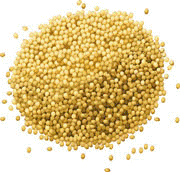International Sorghum and Millet Collaborative Research Support Program (INTSORMIL CRSP)

INTSORMIL Impacts and Bulletins
Date of this Version
2001
Document Type
Article
Citation
2001 INTSORMIL
Abstract
Presently, worldwide, more than 800 million people are hungry and over one billion are desperately poor, and food demand is increasing rapidly. The majority of poor live in rural areas in developing countries and agricultural and food systems development is vital to economic growth; improving environmental quality; strengthening nutrition, health and child survival; improving the status of women; and promoting democratization. It is estimated that, between 1980 and 2030, the population ofow- and middle-income countries will more than double-to seven billion, compared with one billion for high-income countries. In the next 35 years, 2.5 billion people will be added to the current population of 6 billion. More than 1.3 billion people today live on less than one dollar per day, and it is estimated that the number of hungry people will exceed one billion by 2020. The global population of underweight children below age five is expected to increase from 193 million in Year 2000 to over 200 million in Year 2020. Increased production of cereals, which are crucial sources of food energy and other nutrients, is necessary to reduce world hunger.
According to Entering the 21st Century-World Development Report 1999-2000, about 900 million people in almost 100 countries are affected by drought and desertification, and by 2025, that number will double. The population of the world has doubled since 1940, but fresh water use has increased fourfold. Water scarcity is becoming more widespread, with concomitant effects on regional peace and global food security. Nearly all of the three billion increase in global population which is expected by 2025 will be in developing countries where water is already scarce. To meet the increasing demand for food in those countries, there is an increasing demand for more efficient production and new ways of utilizing drought-tolerant crops which have a competitive advantage to produce food under conditions of unpredictable and scarce rainfall. As water becomes more precious in the United States, cereals which can produce energy for feed and fuel in drought-prone areas of the country are demonstrating increasingly competitive advantages.

